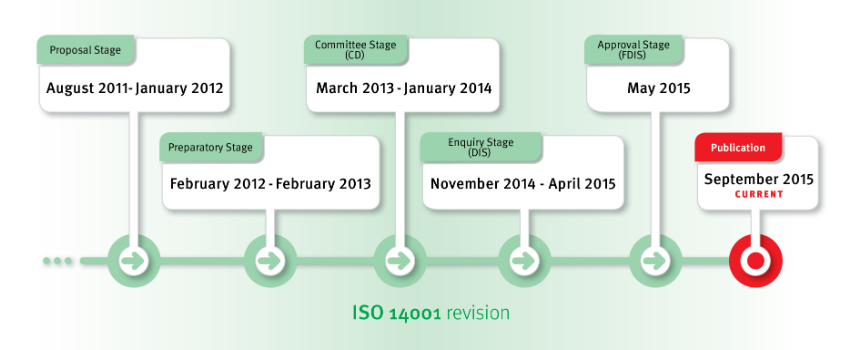Changes to ISO 14001 Environmental Management Systems standard
Written by Tim Greenhalgh
Posted on September 15, 2015
The widely used ISO 14001 Environmental Management Systems standard has just been revised.

ISO 14001:2015 is designed to respond to latest trends and ensure it is compatible with other management system standards.
The main changes are:
- Greater visibility and focus on strategic environmental management planning
- Leadership focus
- More active environmental initiatives like sustainable resource use and climate change mitigation
- Addition of improving environmental performance
- Communications strategy added
The revised standard now follows adheres to same terms and definitions as other standards such as ISO 9001, which will reduce complexity, cost and facilitate auditing processes.
Any organisation with current ISO 14001 certification has three years to update their environmental management system to the new edition. Organisations using third-party certification will need re-certification by that time.
More detail on the main ISO 14001 changes:
Strategic Environmental Management. There is a new requirement to understand an organisation’s environmental context and thereby identify, prioritise and exploit opportunities, with a focus on issues or changing circumstances such as regulatory requirements.
Also assessed are environmental conditions that can affect or be affected by an organisation locally or nationally. Actions to mitigate risk or exploit opportunities are integrated in the operational planning of the environmental management system.
Leadership. This is a new clause and aims to allocate specific responsibilities for leaders in organisations to promote environmental management.
Environmental protection. Organisations are now charged with creating initiatives to protect the environment. The new rules do not define ‘protect the environment’ but note that it can include prevention of pollution, sustainable resource use, climate change mitigation and adaptation, protection of biodiversity and ecosystems.
Environmental performance. Continual improvement now has a wider focus on improving environmental performance rather than a narrow remit to improve the management system. This involves reducing emissions, effluents and waste in line with policy.
Lifecycle perspective. Organisations now need to extend control and influence to environmental impacts associated with product use and end-of-life treatment or disposal, going beyond previous requirements to manage environmental conditions associated with procured goods and services. But there is no compulsion to carry out life cycle assessments.
Communication. The new standard emphasises the need for a communications strategy for on external and internal communications, with consistent and reliable information, while providing ways for people to suggest improvements to the environmental management system.